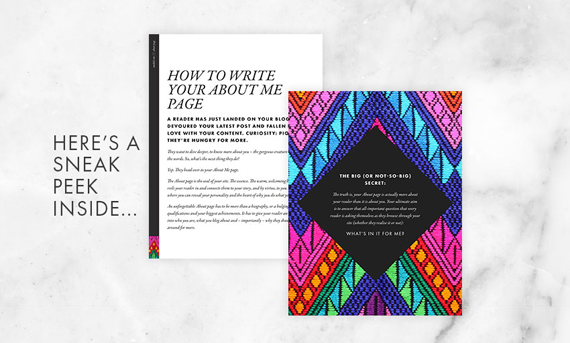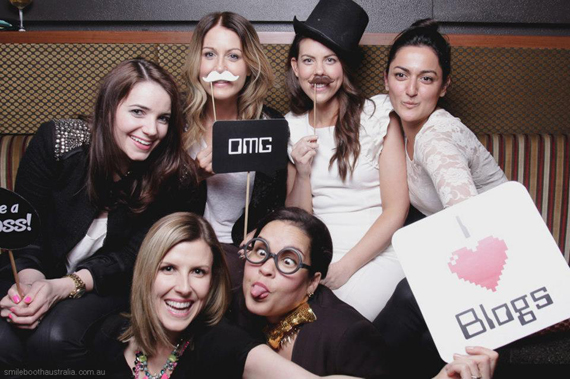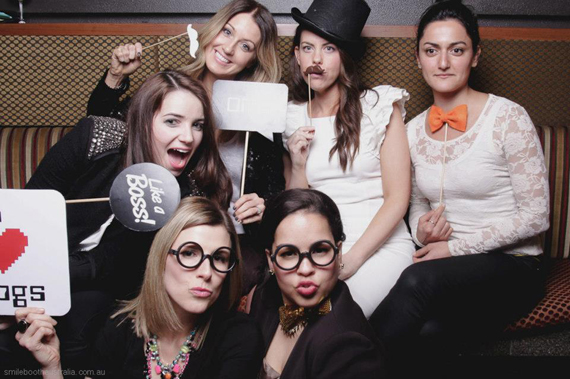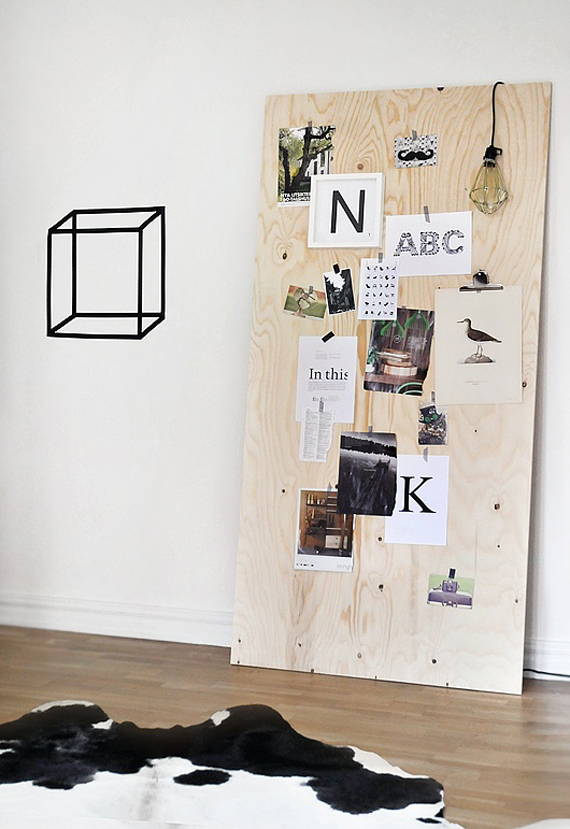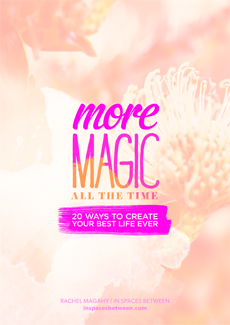
A reader has just landed on your blog, devoured your latest post and fallen in love with your content. Curiosity: piqued. They’re hungry for more. They want to dive deeper, to know more about you – the gorgeous creature behind the words. So, what’s the next thing they do?
Yep. They head over to your About Me page.
The About page is the soul of your site. The essence. The warm, welcoming hug that reels your reader in and connects them to your story, and by virtue, to you. It’s where you can reveal your personality and the heart of why you do what you do.
An unforgettable About page has to be more than a biography, or a bulging list of qualifications and your biggest achievements. It has to give your reader an insight into who you are, what you blog about and – importantly – why they should stick around for more.
The big (or not-so-big) secret
The truth is, your About page is actually more about your reader than it is about you. Your ultimate aim is to answer that all-important question that every reader is asking themselves as they browse through your site (whether they realise it or not):
What’s in it for me?
THE QUESTIONS TO ASK YOURSELF
I’ll preface this by saying that there’s no secret, step-by-step formula for writing the perfect About page, but there are essential elements (which I’ll go into below) that will guide you as you breathe life into your story and your work.
The style, tone, language and design should all be unique to you. What rings true for you and your audience probably won’t be the same as what floats other another bloggers’ boat. Aim for authenticity, always.
Before you start crafting, take some time to ponder these questions:
#1. How do you want people to feel when they read your words?
Like a rocket has been lit underneath them. Soaked in love. Held. Supported. Inspired. Informed. Empowered. Connected. Soothed. Intrigued.
Whip up with a list of your own guiding words before you sit down for the business of writing, and make a point to check back in throughout the process. Does your original intention match what’s unfolding? Have you veered off course?
#2. How can you be different?
In the vast ocean that is the blogosphere, how can you stand out? Where can you inject a little magic that’s yours and yours alone? How can you be innovative and memorable? Incite curiosity? Leave your reader thinking? Perhaps, even, rile them up a little if it’s aligned with your message?
#3. What speaks to YOU? (or: Research Time)
Can you think of an About page that reeled you in from the get go? What was it about the page that resonated with you? The tone? The words? The story? The length? Additional elements (images, video, design?)
Take yourself on a journey of inspiration around the web and find five About pages that leave a lasting imprint on you, and break down exactly why they speak your language.
Dig deeper into what is is that turns you on, and – this is key! – visualise yourself having the same impact on your ‘right people,’ because when you infuse your page with you and come from a place of service and good intent, you will. Words have vibrations.
THE ELEMENTS
Before we dive in, I want to mention that if you’re looking to deeply connect with your readers – rather than drive a big ol’ wedge between you and them – it’s important your About page is written in first person.
As a friend of mine recently said: “If someone writes in third person, they’ve lost me.” I couldn’t agree more. Instantly. It just doesn’t work in the world of personality-driven blogging. Keep it real. Keep it relatable. Keep it conversational.
Right, that said, let’s get this show on the road. The key elements are…
A big, bold opening statement.
This is how you first hook your readers’ interest.
Consider touching on an emotion or problem that you know affects your audience and that you can help them fix, like: “Are you ready to get rid of overwhelm, once and for all?”
Or – proclaim your passion-fuelled purpose to the world: “I’m on a mission to take the fear out of sharing your message.”
You could also give a manifesto-style declaration a go: “I believe that wellness starts from within.”
Whatever you choose, make it potent. It should powerfully connect with your readers and leave them absolutely certain that they are in the right place.
Who you are and what you do.
When we’re captivated by someone’s words, we naturally want to know more about the voice behind the curtain. This is also your big chance to tell your readers how you can help them. Don’t be afraid to step up, declare your brilliance and own it.
A template to get you started:
I’m {your full name} and I am {your title/ vocation} ___________ [a writer/ blogger/ life coach/ motivational speaker/ jewellery designer]
I work with/ write for {your target market/ ideal client/ ideal reader} ___________ [overworked corporate goddesses/ budding entrepreneurs/ wild-hearted women]
Helping them {how you serve} ___________ [reclaim their energy/ build their dream business/ hone their intuition]
You might be thinking: but what if I’m not yet fully where I want to be? (for example, if you’re an aspiring health coach but still knee-deep in a corporate cubicle while you figure out how to move full-time into your dream biz).
My answer? This is your chance to declare your big, bold vision, focusing on how you can serve your readers… now.
If you’re half-way there with starting your health coaching practice, it’s more powerful to say: “As a passionate health coach-in-training, I write for women looking to reclaim their bounce-outta-bed energy through high quality nutrition” than it is to say “I work in an accounting firm but I really want to be a health coach”.
How you got here.
We’re all suckers for stories. We’re wired for them, latching on to narratives and losing ourselves in the unfurling. By divulging the story of how you got to where you are, you create empathy and connection with your readers. You give them an insight into the catalyst for starting your journey, the challenges you met along the way and why it makes you qualified to do what you do.
Consider:
+ The turning point or aha! moment that lead you to where you are
+ What obstacles or conflict you had to overcome to get to that point (real life or internal or emotional – like fear, self-doubt, self-sabotage)
If you’ve had a big career transition (like going from corporate to coach) feel free to bring in your past experience and draw parallels with what you do today.
“In my former life as a media executive, I learnt how to master a message for maximum impact. These days, I put those hard-won skills to use working as a copywriter for wellness visionaries on a mission to change the world.”
Your big why.
Your readers want to know what you stand for. What you believe in. What’s fuelling this giant, love-laden mission of yours. Let ‘em know, loud and proud.
Who your audience is.
Tell them who your people are, who your tribe is. As your readers browse your page, they are subconsciously trying to work out whether they’ve found somewhere they belong. Speak to their needs and desires (especially the ones they didn’t know they had).
“This blog is for women who want it all and are absolutely done with settling for less.”
Get up close + personal.
Bare some little known facts about yourself. Share a quirky nugget or two of goodness. Show your readers that you’re not like everyone else out there – you’ve got a distinct personality, a unique perspective and your own special flair. Think random tidbits that give a broader insight into your personality. Things that show who you really are, that your audience might be interested in. Get creative and see where it takes you.
EXTRA CONSIDERATIONS
Photos. Include at least one headshot (preferably at the top of the page) and if you have them available, one or two other shots that show the ‘real you’ or your lifestyle.
Links to popular posts. Introduce your newfound friend to a selection of your greatest hits. “I write about: how to blog, the essentials when you’re starting out, and the secrets to creating a remarkable product.” Then link ‘em up.
A newsletter opt-in. This is the call to action. When someone has just finished reading your (brilliant) About page, give them the opportunity to sign up for your list, then and there, by including an opt-in form.
Street cred. If you don’t have a separate Media page, include a snapshot of where you’ve been featured, whether it’s your favourite interviews, guest posts, or rave reviews of your work. Anything that shows you as an expert in your corner of the blogosphere will help to build social proof and credibility.
Professional bio. If it fits with your vibe and your brand, consider including a professional biography down the bottom of your About page. This part can list those shiny quals and career achievements you’ve collected along the way.
Social media. Link to all the other places they can find you around the web.
SOME OF THE BEST
When it comes to writing compelling web copy, it helps to see what the pros are doing. Some of my favourite About pages include:
Alexandra Franzen | Danielle LaPorte | Kris Carr | Marie Forleo | The Middle Finger Project | Stratejoy
When you’re seeking inspiration, remember that what your readers are truly seeking is to see you on the page, in all your authentic glory. So take pointers, note what you love and what you loathe, get inspired… and then make it your own. Infuse everything with your own vision and your own essence.
Anything less than that and you are doing yourself – and your audience – a disservice.
How did the In Spaces Between About page come… about?

The current version of my About page was part of my site re-launch late last year. For months leading up to the launch, I had been gathering up scraps of sentences and beautiful collisions of words as they came to me, storing them all in an inspiration file (an Evernote notebook).
It was definitely a journey of tweaking, tinkering, adding, subtracting, fine-tuning, fiddling and polishing, until I finally felt like I had successfully got my heart onto the page.
The thing is, I’m still going. I continue to fiddle, tweak and tinker. Your About page is a dynamic creature. Just as you are always growing and changing, it should evolve with you.
It’s a constant work-in-progress. The way it should be.
The biggest thing to remember
Is that there’s no right and wrong when it comes to writing your copy – or in fact, when it comes to building a blog that is all you. There’s no cookie-cutter blueprint to ensure success. All you can do is align with what feels good and right to you, because when it’s authentic and shows your inner light ablaze, your people will love it.
They’ll connect, they’ll join in, and they’ll devour everything you write.
This is a preview from my upcoming blogging ecourse. It’s unlike anything else out there. It’s about blogging from the inside out. Bringing soul to your site. Infusing serious ‘how to blog’ substance with a whole lotta heart.
I’d love your help in sharing this post around (tweet it! Facebook it! Pin it!) using the buttons below (thank you ever-so-much) and also:
Let’s hear it from you. Did you struggle with writing your About page? Do you have a favourite page you want to share? Let’s get chatty in the comments.

